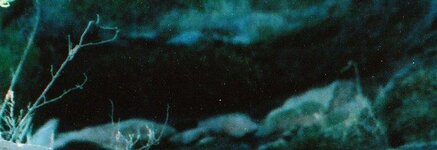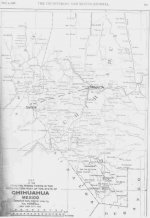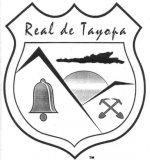the blindbowman
Bronze Member
- Nov 21, 2006
- 1,379
- 30
- Thread starter
- #41
Oroblanco said:PS - Blindbowman, I am just ONE GUY. You don't HAVE to prove it to me. Besides, don't you think you would like to read Real de Tayopa's replies?
Thom I sure hope I didn't say something offensive - I have plenty of enemies already and don't need to lose any friends! That clue about the Cerro de las Campanas is the one that I always had the most problems with, since there are several different ancient mines such as the Dios Padres that the owners claim are Tayopa, yet none (except ONE - that owned by our mutual amigo Real de Tayopa) will fit with that clue. Jose' finally let me know the reason why we have this rather peculiar problem, it is because several different places were named Tayopa over the centuries. If not for this fact, I would have dismissed the claim of our amigo Blindbowman offhand - but we know that the name was used for several different places....so it IS possible, but I want (or hoped) to see some proof that will "lock" it for me.
Arkhunter wrote:
i think he means me <snip>
I don't think so amigo, I did not see anything that sounds like a personal attack in your posts. In fact didn't you say,
wow...what a leap...a total lack of logic...very sad really
That does not sound like any kind of insult to me - if it were, why would you have said it was "sad" that he was willing to let his discoveries "rot" for "another 500 years"? Did I miss something there?
Maybe I am just not reading the posts the way Blindbowman is taking them? Blindbowman if you are still active, I hope that you are not just having a bad day or something - I know that sometimes I take things 'the wrong way' if my day has been in the old crapper all day long. What was said that hit you, amigo Blindbowman, as some kind of personal attack? I am pretty sure no attack was intended.
One last bit on personal attacks - I don't care for "flame wars" as happens on forums all too often. I am pretty sure that if Arkhunter, myself or any other of your amigos here had intended a personal attack on you Blindbowman, there would be no doubt about it. The moderators would then likely intercede and posts would get removed, and in really bad cases a member or two would get banned temporarily or permanently. So mi amigo Blindbowman, take it easy pal you are among friends here, friends who have been enjoying the discussion.
Good luck and good hunting to you all my friends, I hope that you find the treasures that you seek.
your friend,
Oroblanco
thank you . i thaught the black spots were from fires but they said it was some kind of color dye. that must of been where the bells were put to cool ...and dry .. i thaught the black spots with rings of stones may hae been some kind of greave ritual .. it must be where the bells set drying ,....why didnt you just say that in the frist place , its june 15 th and the mesa is mapa mesa , and i know just why they say that ... i dont speak spainish and i am not going to keep looking up every spainish word they knew .... my eyes are over worked now . i read thousands of pages a week and every time i mis spell some word everyone acts like they are teachers or some great malfunktion has taken place ...
i dont real care at this piont if the tayopa is ever found ...i dont care if RDT is wrong ...? am i right .. if i dont go back no one well ever know what i found is tayopa ...
let RDT find it where he thinks it is ,if it is there ... i am washing my hands of this legend .. i got better things to do at this piont in my life ...
before you ask ... lol





 ??
??




